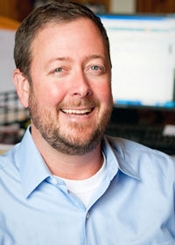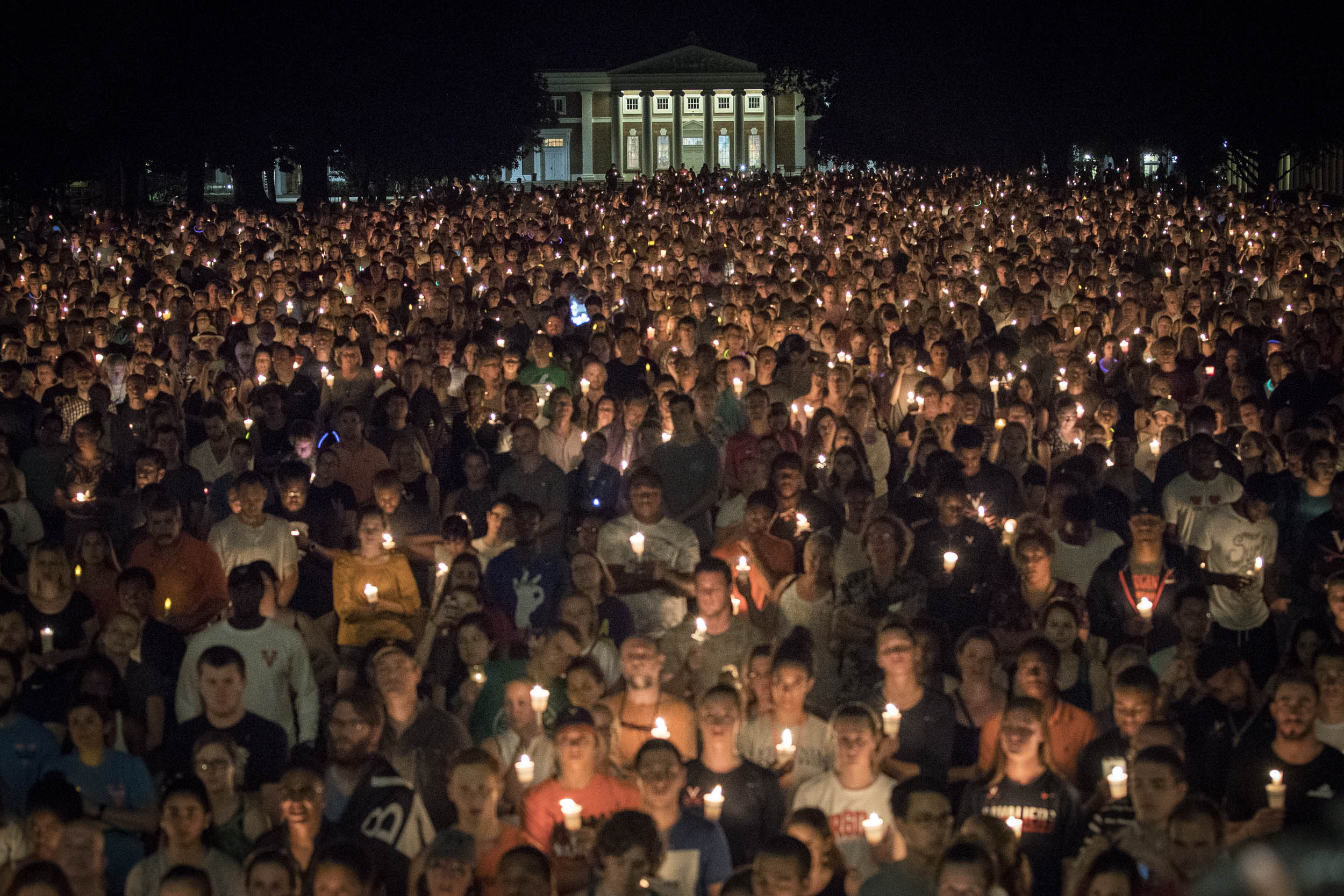#Charlottesville
 Written by Kirt von Daacke, Assistant Dean and Professor of History, College of Arts & Sciences
Written by Kirt von Daacke, Assistant Dean and Professor of History, College of Arts & Sciences
The white supremacist intimidation and violence that descended upon the University of Virginia and Charlottesville on August 11th and 12th was horrific and terrifying. The images of torch-bearing angry white supremacists marching on Grounds, shouting Nazi slogans, hurling racist epithets, and attacking students and community members are ones that none of us will soon forget. Nor should we—they should remind us every hour of every day of the long troubled past to which they are directly related.
Faculty, students, departments, and administrators at the University quickly responded with statements vehemently rejecting the hatred and violence and steadfastly supporting dearly held twenty-first century values of diversity, inclusion, equality, and truth-seeking liberal arts learning. Commentators rightly framed the violence as an attack upon the very idea of the university – an attack upon the truth – a rejection of our shared dedication to diversity and equality. Thousands took to the Lawn for a candlelight vigil as part of a symbolic gesture to take back the Academical Village from white supremacists and begin the process of healing.

In some ways, those statements and that vigil do capture the earnest effort of the modern university. We have entire offices dedicated to diversity and equity, to supporting students from diverse backgrounds, and to protecting our community. Faculty across Grounds teach classes that address diversity, racism, and inequality. In these classes, faculty not only challenge students to understand the ways racism and inequality can be perpetuated systemically, but to think about pathways for positive change in the world. Student organizations likewise advocate for the University’s endless pursuit of better—better support for students, faculty, and staff; better understanding of our own institutional history; and clear acknowledgment that the school has not always been committed to diversity or equality.
August 11th and 12th revealed to many how much work we have left to do and how some students still struggle to feel safe and welcome here. Charlottesville, until recently one of America’s most desirable and happiest places to live, has now become a hashtag (#Charlottesville) that evokes those still fresh memories of pain and violence. So, we stand at a teachable moment—we have the opportunity to seek the truth without fear of where it may lead us, and we do not have to look long or hard for ideas about where to start.
We must begin with a fuller reckoning of our own historic institutional complicity in human bondage and white supremacy. For the past several years, the University has begun the process of fully acknowledging its historic involvement in enslavement. Remember, UVA’s founder owned 607 people over the course of his life, consistently argued that African Americans lacked the capacity to be productive citizens in his imagined white republic, and even pondered a possible biologic foundation for a racial hierarchy with whites on top. Thomas Jefferson also envisioned UVA as a radical experiment in American higher education, but one that would be built and supported by thousands of enslaved people whom he saw as incapable of sophisticated learning. The University of Virginia and the President’s Commission on Slavery has worked steadfastly to make that history known through naming new buildings, adding interpretive signage and spaces, creating walking tours, crafting a new curriculum, and moving forward with plans to build a substantial memorial to the enslaved.
The commission has even expanded on its vision and charge, rightly understanding that the enduring legacies of slavery—Jim Crow/segregation, racism, white supremacist organizations, eugenics, income inequality, policing, and incarceration rates—also have a history at UVA. #Charlottesville has reminded us of the urgent need to continue that work and come to terms with the rest of the institution’s history. But where do we go from here?

While the white supremacist violence on August 11th and 12th no longer represent the values of most people at our twenty-first century school, Jason Kessler and Richard Spencer are both recent graduates of the University and are the descendants of generations of UVA graduates in the 19th century who developed and spread pro-slavery ideology, white supremacy, and pseudo-scientific eugenicist ideas around the world. Racism continues to bubble up in visible and unsettling ways on Grounds. Acknowledging and understanding our own almost two hundred year complicity in developing and sustaining the ideas undergirding that violence is the first key step.
Despite all of UVA’s real progress, we know more must be done to achieve the open and diverse community we want. UVA until the 1960s remained a white male school, in many ways dedicated to maintaining the white supremacist order. The conscious decision to expand Jefferson’s vision for this university and reject his views on race and gender are relatively recent phenomena—we need to continue to nurture these changes and celebrate those who in the 1960s and 1970s changed the University.
We must continue with forthright acknowledgement of that past and let truth lead us into our third century. Acknowledgement is a progressive and iterative process and we need to return to it again and again. But we also need to develop concrete policies and procedures that address the enduring systemic problems our past involvement in slavery and white supremacy have left behind. I hope that as UVA embarks on its third century, we as a community will stake out a vision, new policies, and bold initiatives that mean we won’t have to endlessly pursue equality and inclusion.
- A Revolution in the Air: The Wright Brothers Take to the Sky on December 17, 1903
- Musings on National Violin Day
- Making the Promise Real: How a UN Tax Convention Can Fulfill the UNDHR’s Vision
- Virginia Club of New York: January Hybrid Business Forum Breakfast
- UVA Club of Washington DC: January Silent Reading Social
- UVA Club of Richmond: Trivia Night - Hoos the Smartest?